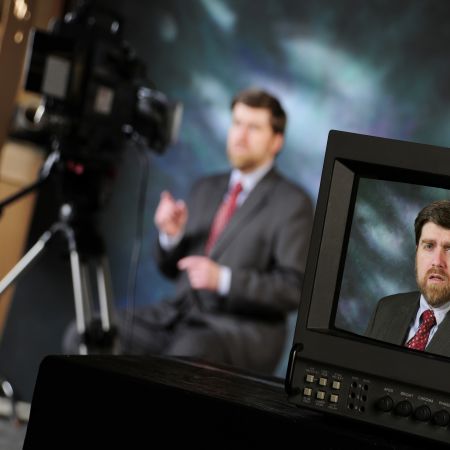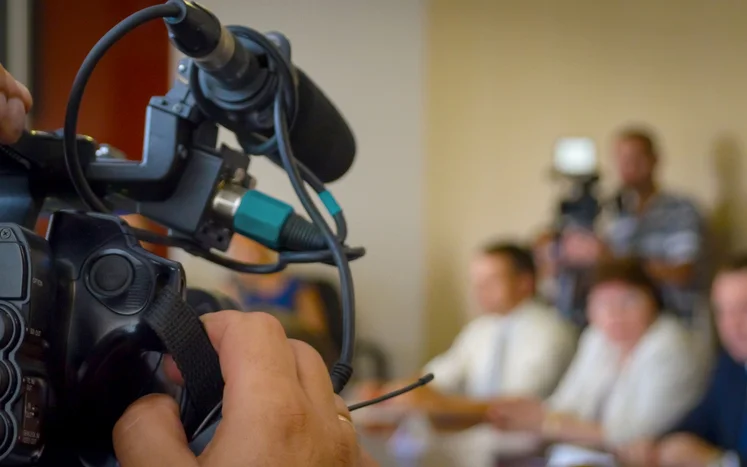The Ultimate Overview to Legal Videography for Lawyer and Legal Teams
The Ultimate Overview to Legal Videography for Lawyer and Legal Teams
Blog Article
Exploring the Mechanisms of Legal Videography: Unveiling Its Operation in Shielding Genuine Aesthetic Statement for Judicial Procedures
In the realm of judicial procedures, the role of lawful videography stands as a keystone in maintaining and providing visual evidence. As modern technology remains to breakthrough, the systems behind legal videography have actually come to be increasingly detailed, using an essential layer of credibility to testaments recorded on video. By delving into the functional ins and outs of legal videography, one can reveal the careful processes that safeguard the stability of visual proof provided in courtrooms - Legal Videography. This expedition not only loses light on the historical evolution of lawful videography but additionally means the future trends that might even more change exactly how visual statements are supported in the world of justice.
Historical Advancement of Legal Videography
Checking out the historical progression of lawful videography discloses a significant improvement in the recording and presentation of visual proof within the lawful landscape. In the past, legal process heavily relied on written transcripts and photographs to record events and offer proof. Nonetheless, with the introduction of video modern technology, the lawful industry saw a paradigm change in just how aesthetic testament was captured and presented.
The advancement of lawful videography can be mapped back to the late 20th century when advancements in video recording equipment made it much more available for use in courts. This technological development not only enhanced the accuracy and reliability of visual proof yet additionally changed the means instances existed to juries and judges (Legal Videography). Attorneys started to identify the convincing power of video recordings in conveying emotions, subtleties, and non-verbal signs that created transcripts or photographs alone might not catch efficiently

Technology Advancements in Video Documents
What key technical improvements have reinvented video clip paperwork in the legal field? The lawful area has actually seen considerable developments in video documentation technology that have actually improved the authenticity and reliability of aesthetic proof in judicial procedures. One of the vital innovations is high-def (HD) video recording capacities, which supply crystal-clear pictures and sharp details that are crucial for properly catching testimonies, faces, and other visual signs. In addition, the combination of timestamping and metadata features in video documents devices has made it possible for exact paperwork of when and where the video clip was taped, guaranteeing the integrity of the proof presented in court.
Moreover, improvements in video clip encryption and watermarking modern technologies have boosted the safety and security and tamper-proof nature of video evidence, guarding it against unauthorized changes or tampering. The arrival of cloud storage services and remote gain access to abilities has structured the storage space, retrieval, and sharing of video clip evidence, assisting in seamless cooperation amongst lawful professionals and guaranteeing effective accessibility to essential aesthetic testimonies when needed. These technological advancements in video documentation have definitely changed the lawful area, improving the precision, credibility, and admissibility of visual evidence in judicial proceedings.
Role of Legal Videographers in Court Setups
The evolution of video clip paperwork innovation in the legal field has necessitated an important function for legal videographers in court room setups, making sure the integrity and reliability of aesthetic testimonies presented throughout judicial procedures. Lawful videographers play an essential role in recording and protecting accurate aesthetic evidence that can be essential in litigation. Their duty reaches establishing devices, recording process, and producing high-quality video clips that accurately mirror the events in the court room.
Furthermore, lawful videographers often function very closely with lawful groups to ensure that the video evidence aligns with the situation's demands and can be properly offered in court to sustain the legal arguments being made. In general, the function of legal videographers in court settings is vital in promoting the concepts of justice and making certain the openness of lawful process. Legal Videography.

Ensuring Admissibility and Honesty of Video Proof
To keep the reliability of aesthetic proof offered in legal procedures, making sure the admissibility and honesty of video evidence is a vital duty for lawful videographers. Admissibility describes the approval of proof by the court, and for video clip evidence to be admissible, it needs to fulfill particular criteria. Legal videographers play a vital duty in ensuring that the videos they capture adhere to the policies of proof, such as credibility, reliability, and importance.
Honesty of video evidence includes maintaining the originality and precision of the video from the moment it is tape-recorded up until it exists in court. This consists of firmly keeping the video data, recording the chain of custody, and avoiding any type of tampering or changes. Legal videographers need to stick to rigorous methods image source to guarantee the stability of the video evidence and prevent any obstacles to its credibility.
Future Trends in Legal Videography
Provided the increasing reliance on innovation in lawful process, lawful videographers are poised to welcome innovative improvements forming the future of aesthetic testament capture and presentation. Among the noticeable patterns coming up is the assimilation of virtual truth (VR) and boosted reality (AR) modern technologies into legal videography. These modern technologies have the possible to transform just how aesthetic proof is presented in courts, allowing courts and judges to submerse themselves in the more helpful hints scene of the crime or event.
Additionally, making use of man-made knowledge (AI) algorithms for video clip evaluation is expected to improve the process of reviewing and evaluating big quantities of video clip footage. AI can aid in determining crucial minutes, anomalies, and patterns within video clips, enhancing the effectiveness of lawful investigations.

Final Thought
To conclude, lawful videography has played a vital duty in providing authentic visual evidence for judicial proceedings. With technological developments and the know-how of legal videographers, the honesty and admissibility of video evidence are article made sure in courtroom setups. As legal videography proceeds to advance, it will be essential to promote standards that maintain the precision and integrity of aesthetic testimony for the future of legal procedures.
Taking a look at the historic development of lawful videography reveals a substantial makeover in the catching and discussion of visual evidence within the lawful landscape.The development of video documentation technology in the lawful field has actually necessitated an important duty for legal videographers in court room setups, making certain the stability and reliability of aesthetic statements offered throughout judicial process. Additionally, lawful videographers usually function very closely with legal teams to ensure that the video clip proof aligns with the instance's requirements and can be successfully offered in court to sustain the legal disagreements being made.To preserve the reputation of visual proof offered in lawful procedures, making sure the admissibility and honesty of video clip evidence is a critical duty for lawful videographers. As lawful videography proceeds to evolve, it will certainly be vital to maintain requirements that keep the accuracy and integrity of aesthetic statement for the future of legal process.
Report this page